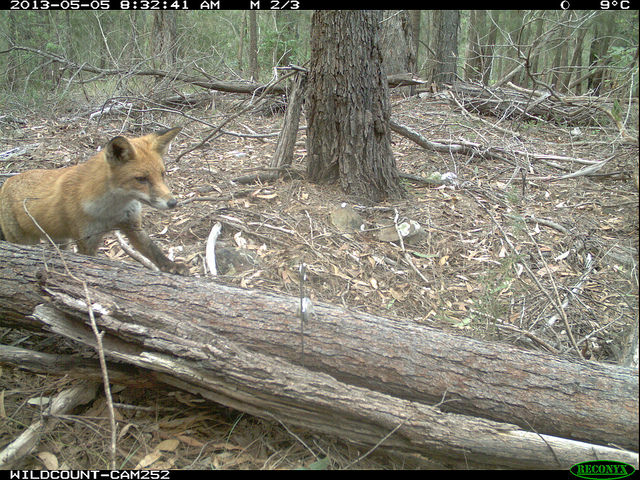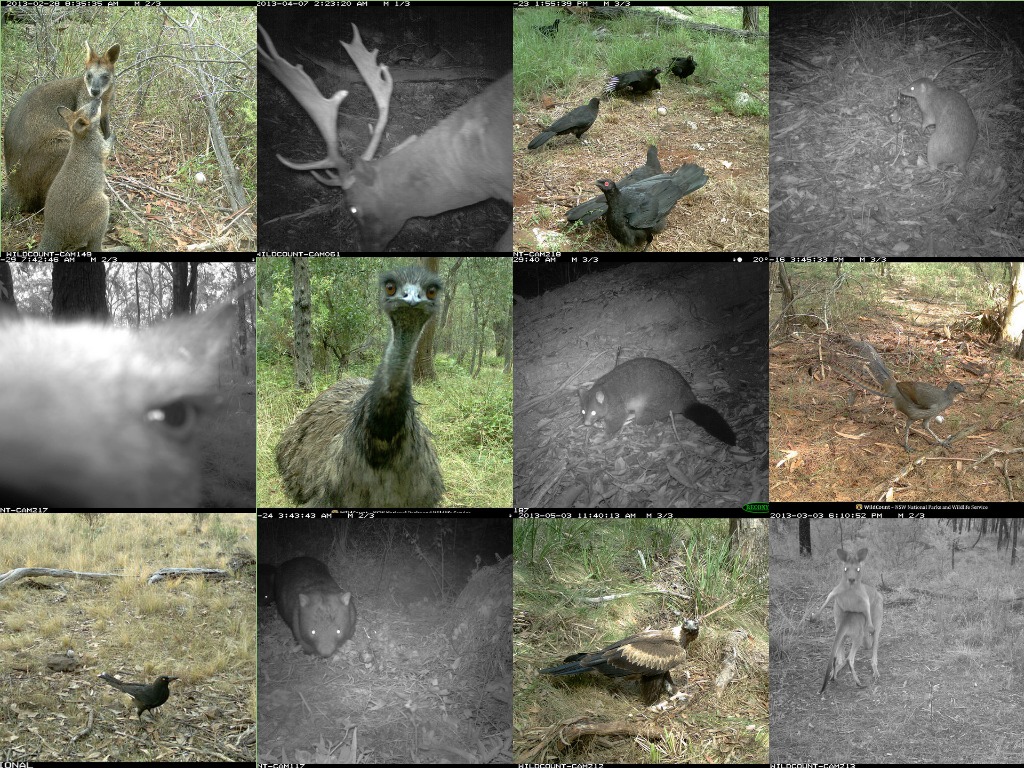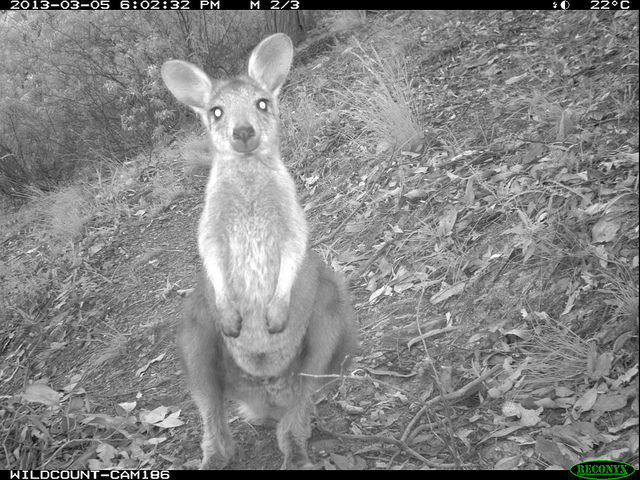The Atlas of Living Australia is set to receive a dataset that is bursting with thousands of ‘wildlife selfies’ which will eventually find their way onto the species profiles of the site. You can help by identifying the cheeky animals in these photos through the DigiVol portal.
Investigating the decline of our native species
The WildCount project is an initiative from the NSW Office of Environment and Heritage and National Parks and Wildlife Service and is a 10-year monitoring program that uses 300 motion-sensitive digital cameras across 146 National parks and reserves. It looks at trends around what animals are present at these sites and how many there are, to understand if native species are in decline, increasing in number or stable.
Since the WildCount program started in 2012, over 800,000 images have been collected. Each year between February and May the WildCount team go out into the bush and set up the motion sensing cameras. They set up a lure of peanut butter and honey in a tea ball to attract the animals and wait two weeks before retrieving the cameras to see what they have captured.
The only problem is that when the team are done with checking all the cameras, there will be around 280,000 images captured. This takes a small team of researchers and volunteers almost a whole year to process accurately. While about one third of all the images contain no animals, WildCount has captured some truly weird and wonderful animal interactions so far, like a pair of wallabies having a hug, a curious emu, a Lyre bird attacking a black snake and a wombat crossing paths with a spider.
How can Citizen Scientists help?
The WildCount team is now looking to Citizen Scientists to help sift through this vast volume of ‘animal selfies’ to see if they can process the data much faster whilst still maintain the scientific accuracy of the study. If you know what a kangaroo, emu, echidna or possum looks like or the name of the bird on the Australian 10c piece you’ve got the skills to be a citizen scientist on the WildCount project.
Citizen Scientists will use DigiVol, a website developed by the Australian Museum and the Atlas of Living Australia, to record information from each image such as the number of animals in the photograph and the name of the species. DigiVol has been primarily used for unlocking scientific data from the biodiversity collections of institutions in Australia and around the world including the Smithsonian, Kew Gardens, South Australian Museum, Museum Victoria, CSIRO’s Australian National Insect Collection, Harvard University and many more. Its innovative and flexible online platform provides institutions with an easy to use interface for hosting their own “virtual expeditions” and is perfect for hosting WildCount. More importantly DigiVol provides an interesting and fun way for citizen scientists to contribute to science.
After the images are processed the WildCount team and experts will verify the species identification and counts. They are currently with biostatisticians from industry and CSIRO to help them detect changes in the occurrence of several Australian small-medium mammal species such as the brush tail possum, rock wallaby, lyrebird, grey kangaroo and the common wombat over 10 years. This will help understand if there are changes occurring that meet the criteria for listing species under the IUCN Red List. The power to detect such changes means scientists have an early warning system to see what is happening to common native species as well as examine other trends such as increase in pest species like red foxes.

By helping to capture this information, the community would be helping scientists understand changes in native and pest species which will assist in the management of NSW’s precious biodiversity in National parks and reserves. It may also uncover a few weird and wonderful animal interactions or even prove the existence of Drop Bears or Bunyips once and for all!
It is hoped that many Citizen Scientists will join DigiVol and not only help with WildCount but the many other worthwhile “virtual expeditions” on DigiVol. Over the past four years DigiVol has seen over 1000 volunteers capture data from more than 170,000 labels and field note pages from museums and collections.
You can take part in the WildCount DigiVol expedition here.
The WildCount DigiVol expedition is a collaboration between the NSW Office of Environment and Heritage, The Australian Museum and the Atlas of Living Australia (ALA). The data from this project will be processed via DigiVol and uploaded to the ALA website and the data archived and made available through NSW BioNet Wildlife Atlas.

